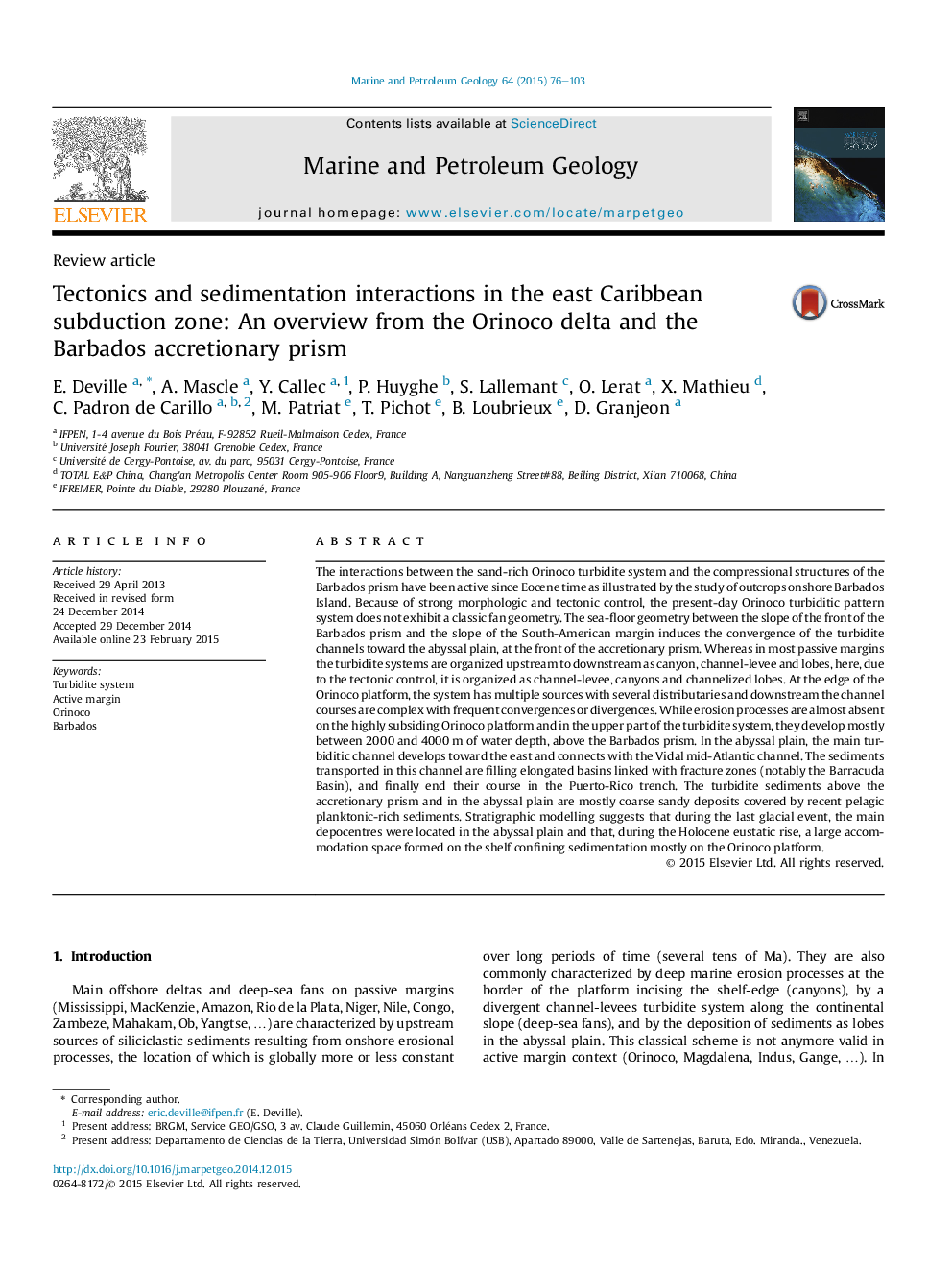| کد مقاله | کد نشریه | سال انتشار | مقاله انگلیسی | نسخه تمام متن |
|---|---|---|---|---|
| 6435136 | 1637161 | 2015 | 28 صفحه PDF | دانلود رایگان |
- An overview of the nature and architecture of the Orinoco turbidite system is proposed.
- We discuss how the active margin tectonic processes control the turbidite system.
- We discuss the specificity compared with turbidite systems in passive margins.
- Deep-marine erosion processes and sediments transport are described.
- A numerical model is proposed and compared with the actual sedimentary system.
The interactions between the sand-rich Orinoco turbidite system and the compressional structures of the Barbados prism have been active since Eocene time as illustrated by the study of outcrops onshore Barbados Island. Because of strong morphologic and tectonic control, the present-day Orinoco turbiditic pattern system does not exhibit a classic fan geometry. The sea-floor geometry between the slope of the front of the Barbados prism and the slope of the South-American margin induces the convergence of the turbidite channels toward the abyssal plain, at the front of the accretionary prism. Whereas in most passive margins the turbidite systems are organized upstream to downstream as canyon, channel-levee and lobes, here, due to the tectonic control, it is organized as channel-levee, canyons and channelized lobes. At the edge of the Orinoco platform, the system has multiple sources with several distributaries and downstream the channel courses are complex with frequent convergences or divergences. While erosion processes are almost absent on the highly subsiding Orinoco platform and in the upper part of the turbidite system, they develop mostly between 2000 and 4000Â m of water depth, above the Barbados prism. In the abyssal plain, the main turbiditic channel develops toward the east and connects with the Vidal mid-Atlantic channel. The sediments transported in this channel are filling elongated basins linked with fracture zones (notably the Barracuda Basin), and finally end their course in the Puerto-Rico trench. The turbidite sediments above the accretionary prism and in the abyssal plain are mostly coarse sandy deposits covered by recent pelagic planktonic-rich sediments. Stratigraphic modelling suggests that during the last glacial event, the main depocentres were located in the abyssal plain and that, during the Holocene eustatic rise, a large accommodation space formed on the shelf confining sedimentation mostly on the Orinoco platform.
Journal: Marine and Petroleum Geology - Volume 64, June 2015, Pages 76-103
